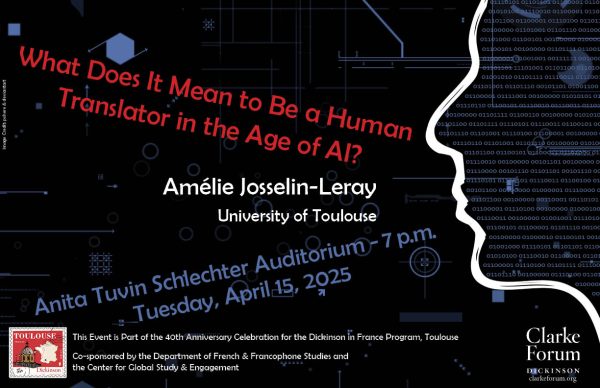Dickinson’s Conflicting Sustainability Messages
If there were a list of all the words that people in the student body, faculty, staff, and administration mentioned throughout an average day at Dickinson, “sustainability” would be near the top of the list. This is for a good reason: the college desires to become more environmentally-friendly. While the college’s goal to become more sustainable is praiseworthy, their efforts have at times fallen short and other times have gone too far.
For example, the facility heating systems overheat some of the buildings on campus. This is a good example of how Dickinson fails to be sustainable. It makes no sense monetarily or environmentally to have buildings use up more fossil fuels than what is required to keep every person comfortable. Instead of wasting money and fossil fuels by heating up these buildings to higher temperatures than what is necessary, it makes more sense for the college to turn the building temperatures down a couple of degrees. This act would mean that Dickinson would use fewer fossil fuels and spend less money, which is a win-win monetarily and environmentally.
Another problem with Dickinson’s sustainability initiative is that compost bins are not arriving in residence halls quickly enough. For example, 25-27 West High Street still does not have a compost bin. If the residence had a compost bin, I have no idea where the bin is located. While I doubt that my residence is the only building without a compost bin, I believe that this is an example of how Dickinson is not sustainable. While there are efforts to bring in more compost bins around campus, this is not happening at a fast enough rate for Dickinson’s sustainability efforts to reach its full potential.
At the other extreme, Dickinson sometimes focuses so much on sustainability that the end result is counterintuitive, which is marked by the lack of an adequate laundry allotment. I have no idea who decides the laundry allotment amount (Dickinson through contracting with eSuds, or Dickinson by informing eSuds of the exact allotment). Anyone who separates light-colored clothing from dark-colored clothing, including myself, knows that there is not enough laundry money for two loads a week throughout the semester. If I try to put all of my laundry into one dryer, my clothes remain mostly wet. This forces me to run another load and negate any sustainability efforts attempted by Dickinson through eSuds and/or Dickinson itself to reduce the amount of energy that is used. Instead of setting a laundry allotment and using more energy than reqired, the college should make sure the energy is used effectively.
At the moment, there are two extremes of Dickinson sustainability. On one extreme, Dickinson’s efforts to use fewer fossil fuels are inadequate. On the other extreme, the college is paranoid about energy reduction. The end result may be using more energy than necessary. Hopefully, the new administration will be able to find a balance between these conflicting sustainability efforts.



